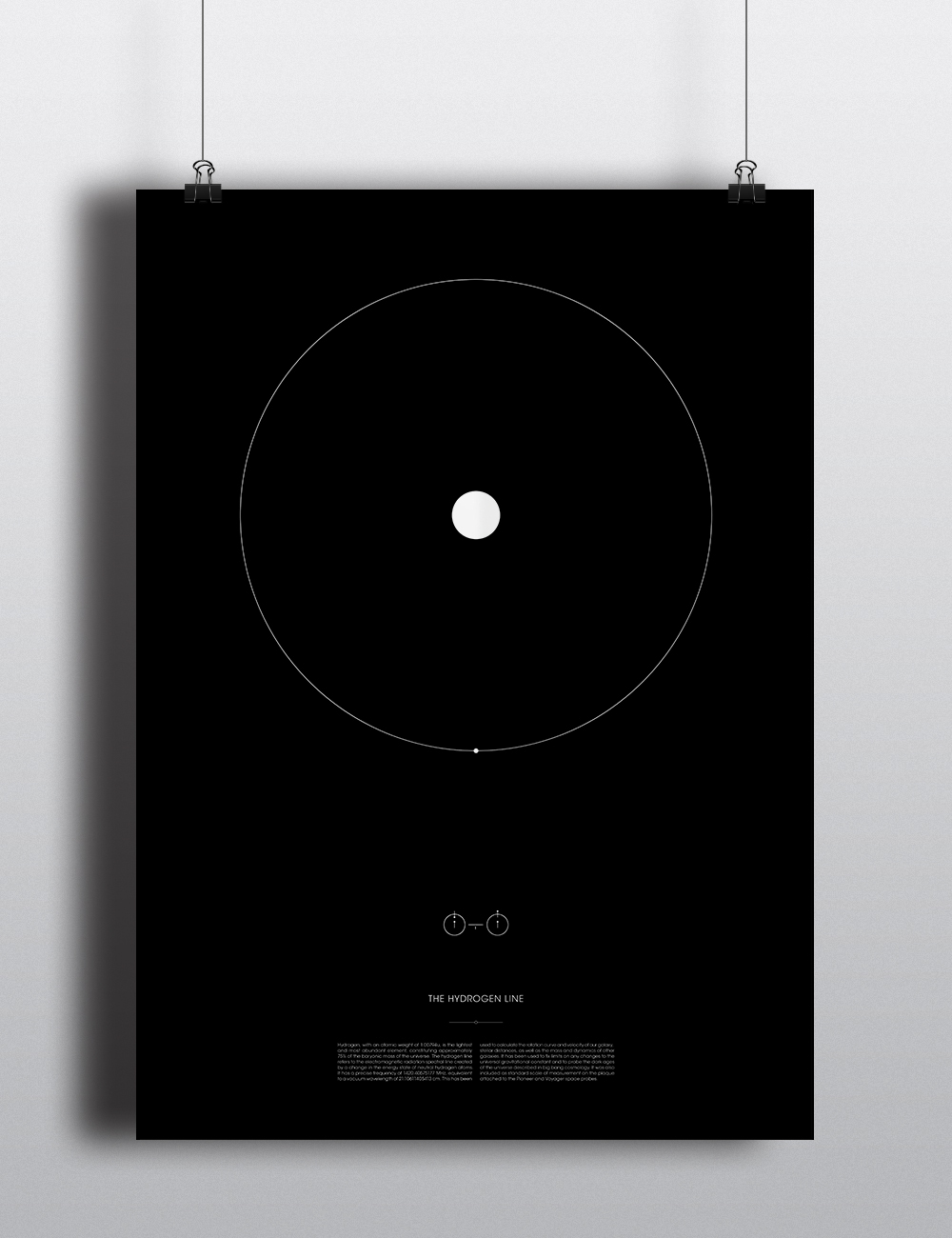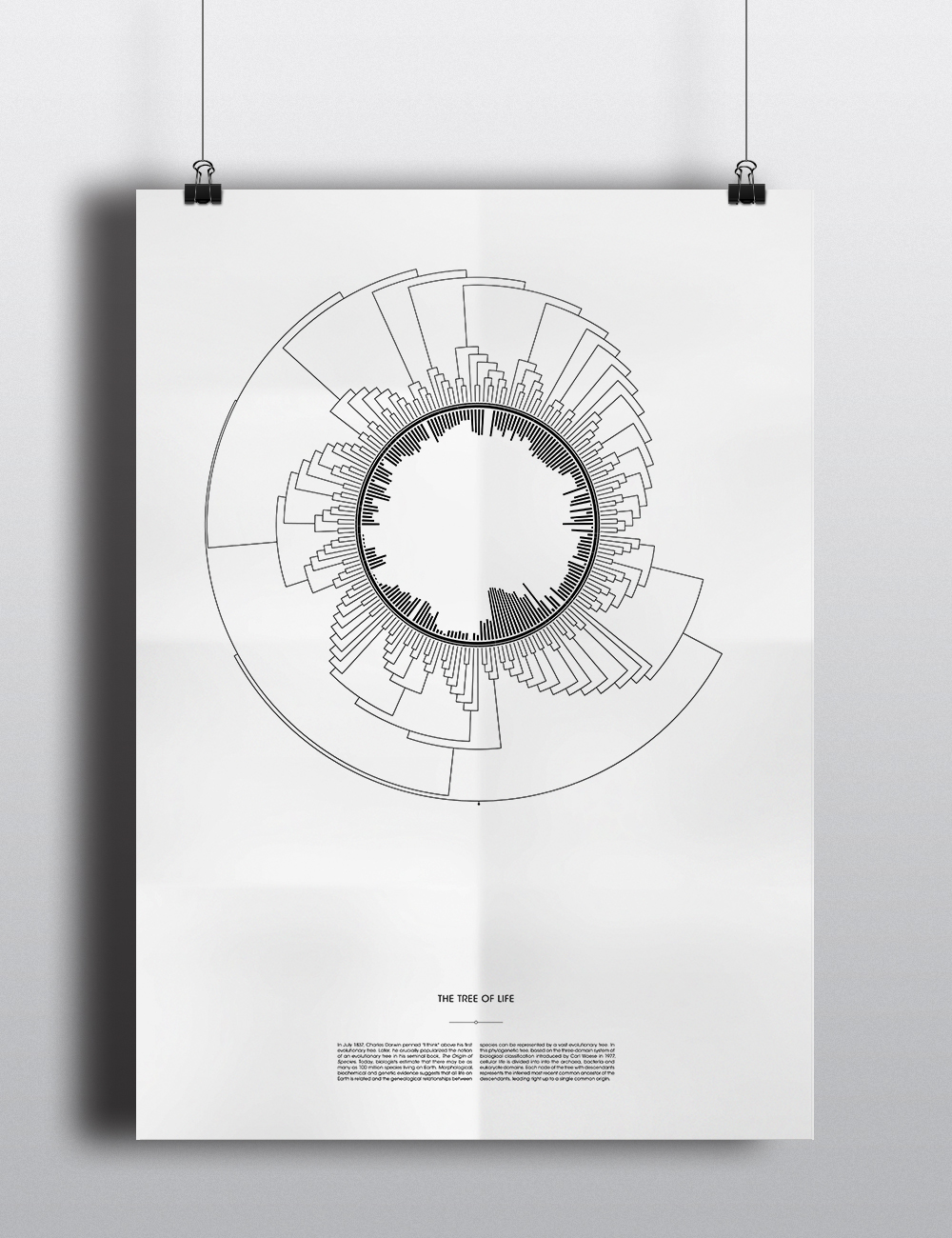Manifold is a series of minimalist art prints. These precise and complex illustrations encapsulate the raw beauty of the most profound and enigmatic concepts known to science, from the infinitely small to the infinitely large, questions on the origin of life and the universe itself are explored in raw, simplistic detail.
The Calabi Yau Manifold
String theory is a primary candidate for unifying quantum mechanics with Albert Einstein's general theory of relativity. The extra dimensions of spacetime described by string theory are conjectured to take the form of a 6-dimensional Calabi–Yau manifold. This rendering depicts what many believe is the simplest and most elegant of these possibilities, a quintic polynomial in four-dimensional complex projective space.


The Hydrogen Line
Hydrogen, with an atomic weight of 1.00794u, is the lightest and most abundant element, constituting approximately 75% of the baryonic mass of the universe. The hydrogen line refers to the electromagnetic radiation spectral line created by a change in the energy state of neutral hydrogen atoms. It has a precise frequency of 1420.40575177 MHz, equivalent to a vacuum wavelength of 21.10611405413 cm. This has been used to calculate the rotation curve and velocity of our galaxy, stellar distances, as well as the mass and dynamics of other galaxies. It has been used to fix limits on any changes to the universal gravitational constant and to probe the dark ages of the universe described in big bang cosmology. It was also included as standard scale of measurement on the plaque attached to the Pioneer and Voyager space probes.


The Pulsar Map
The pulsar map is a galactic map to Earth that was included on the Pioneer and Voyager space probes. On this map, the position of our sun is triangulated relative to the centre of the galaxy and 14 pulsars whose rotation periods circa 1977 are given as a multiple of the frequency of the hydrogen spin-flip transition. It is theorized that an advanced extraterrestrial civilization could use this to locate our solar system.


The Solar System
The Sun, a type G2 main-sequence star, is orbited by eight planets, Mercury, Venus, Earth, Mars, Jupiter, Saturn, Uranus and Neptune. Pluto, by modern classification, is relegated to dwarf planet status, joining the ranks of Ceres, Haumea, Makemake and Eris. The solar system formed approximately 4.568 billion years ago from the gravitational collapse of large molecular cloud, likely several light-years across.


The Tree of Life
In July 1837, Charles Darwin penned "I think" above his first evolutionary tree. Later, he crucially popularized the notion of an evolutionary tree in his seminal book, The Origin of Species. Today, biologists estimate that there may be as many as 100 million species living on Earth. Morphological, biochemical and genetic evidence suggests that all life on Earth is related and the genealogical relationships between species can be represented by a vast evolutionary tree. In this phylogenetic tree, based on the three-domain system of biological classification introduced by Carl Woese in 1977, cellular life is divided into into the archaea, bacteria and eukaryote domains. Each node of the tree with descendants represents the inferred most recent common ancestor of the descendants, leading right up to a single common origin.








